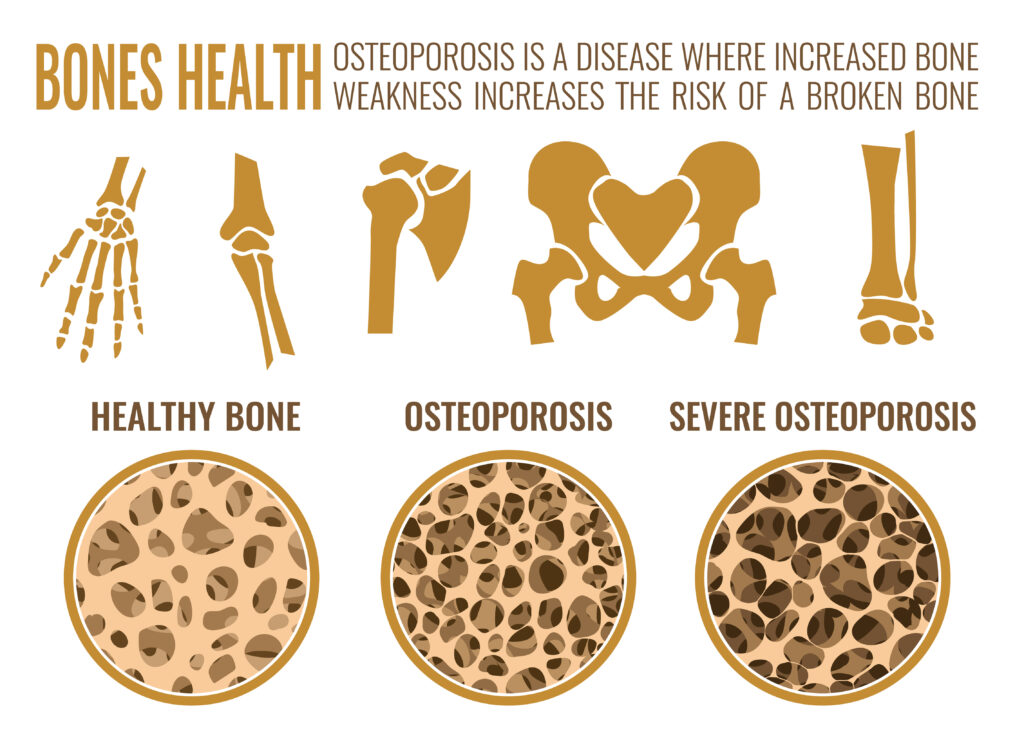
One out of two women and one out of four men will break a bone due to osteoporosis in their lifetime.
Those sobering statistics come from the National Osteoporosis Foundation, which also found in its 2010 study that 54 million U.S. adults aged 50+ had low bone density (LBD). That figure is predicted to climb to 64.4 million by the year 2020.
For those with osteoporosis, the most common bone fractures happen in the hip, spine and wrist. These fractures can be caused by anything from a fall to simply coughing. For many people, a fracture is the first sign that they have osteoporosis.
What is Osteoporosis?
Osteoporosis is a bone disease that occurs when the body breaks down bone too quickly, doesn’t make it fast enough or both. Bone becomes less dense as we age. Contributing factors include:
- Lack of physical activity or proper nutrition
- Certain medical conditions and some medications
- Smoking
- Excessive alcohol intake
Caucasian and Asian women who are postmenopausal are most susceptible to the disease.

Osteoporosis Prevention
The best time to prevent osteoporosis is in childhood and adolescence, as bone density is highest in your 20s. However, for those already in adulthood, the best ways to prevent osteoporosis are through:
- Proper nutrition
- Remaining physically active
- Reducing alcohol intake
- Smoking cessation
- Getting appropriate screening or testing
Osteoporosis Screening and Testing
If you or a family member have suffered one or more fractures or been diagnosed with osteoporosis, an osteoporosis screening or testing by a physician or physical therapist is recommended. The screening consists of multiple questions to assess your risk of osteoporosis and if a need for further testing exists. Meanwhile, osteoporosis testing assesses your bone density, which is found with a scan known as dual energy X-ray absorptiometry (DEXA). This test is the only way to truly diagnose osteoporosis at this time. Blood tests also may help identify any contributing medical conditions. A Good Shepherd physiatrist can order additional tests.
Prevention and Treatment
Prevention and treatment of osteoporosis includes overall strength and conditioning. At Good Shepherd, we focus on:
- Weight-bearing activities
- Strengthening core and extremity muscles
- Flexibility
- Balance training to prevent falls
- Pain reduction interventions, as needed
Request an Appointment
For more information on treating or preventing osteoporosis or to make an appointment, call 1-888-44-REHAB (73422).
